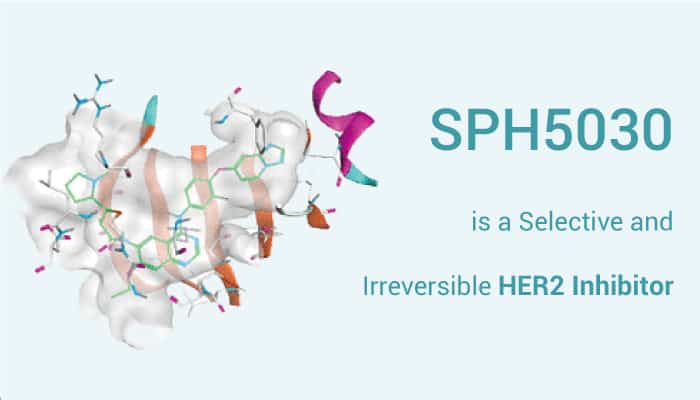HER2 is a member of the human epidermal growth factor receptor (HER/EGFR/ERBB) family. Importantly, HER2 plays a crucial role in the regulation of cell growth, differentiation, and survival. Specifically, HER2 is the only member in the HER family without a specific ligand, so its overexpression accordingly can lead to cell transformation. In addition, HER2 activation results from heterodimerization with another ERBB member or by homodimerization when HER2 concentrations are high, for instance in cancer.
HER2 gene amplification or overexpression is associated with several solid tumors. So, regulating the cellular signal transduction via inhibition of HER2 is a potent way for tumors. Currently, there are a variety of approved HER2-targeted therapies for the treatment of HER2-positive cancer, such as Trastuzumab, Pertuzumab, Trastuzumab-emtansine (T-DM1), Lapatinib, Tucatinib, Neratinib, and Pyrotinib and so on. Here, we will introduce small-molecule tyrosine kinase inhibitors for HER2-amplified and HER2-mutant cancer treatment.
SPH5030 is a selective and irreversible HER2 inhibitor.

Above all, SPH5030 is a selective and irreversible HER2 inhibitor. Meanwhile, SPH5030 inhibits HER2WT and EGFRWT with IC50 values of 3.51 and 8.13 nM, respectively. Besides, this compound (0-10 μM; 72 h) shows anti-proliferation activities against tumor cell lines, with IC50 values of 1.09, 2.01, 20.09, and 6.3 nM for NCI-N87, BT-474, SK-BR-3 with HER2 overexpression and BaF3 cells, respectively.
SPH5030 (3 mg/kg for i.v.; 10/6 mg/kg for p.o.) shows good bioavailability with F% of 87.66% in mouse and 71.35% in rats. Moreover, SPH5030 (5-40 mg/kg; p.o. once per day for 13 or 21 days) shows in vivo anti-tumor efficacy in mice with xenograft tumor models. Specifically, SPH5030 dose-dependent inhibits tumor growth and shows no mortality or significant loss of body weight in xenograft mouse models.
In a word, SPH5030 is a potent, selective, irreversible, and orally active HER2 Inhibitor with anti-cancer activity.
Reference:
[1] Li D, et al. J Med Chem. 2022 Apr 14;65(7):5334-5354.